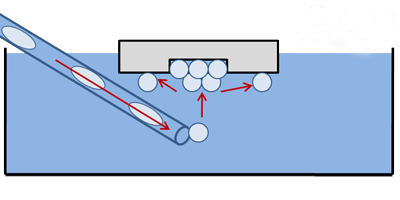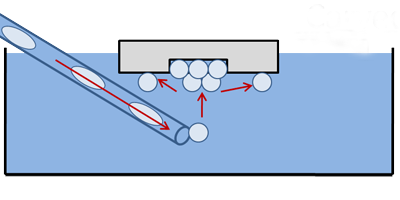Survival of the Fitter
A layer of dispersed spheres tends to pack in a triangular array. But to stack them in three dimensions, another layer can register with either of two sets of holes in the first layer. A third layer can then align with either the unused holes or with the spheres of the first layer. Repeating the first choice leads to a face-centered-cubic (fcc) structure, while the second choice leads to hexagonal close packing (hcp). Because the relationship of neighboring spheres is identical, neither arrangement (nor others) has an energy advantage. But in practice, spheres spontaneously adopt the fcc structure more frequently, as explained by Sascha Heitkam at the University of Paris-Sud in Orsay, France, and co-workers in Physical Review Letters.
The researchers simulated the assembly of a close-packed structure of spheres that either sink or float in a surrounding fluid, and also did corresponding experiments with buoyant bubbles and hard spheres. They identified a critical phase when a sphere appears on one layer before the previous layer is complete. If the spheres are in the hcp arrangement, incoming spheres push those in the next layer sideways, potentially ejecting them into unfilled regions. In contrast, in the fcc arrangement the force pushes the earlier spheres directly toward others on the layer below, so this structure can persist and seed further growth. Although the results depend on the detailed conditions, the authors suggest that this difference in stability may be important in many types of growth. – Don Monroe





